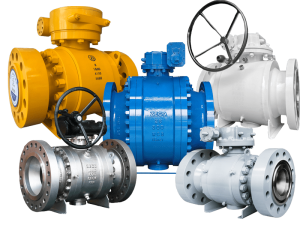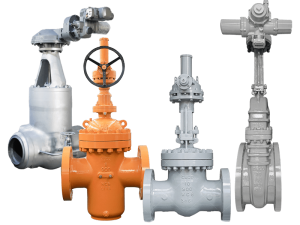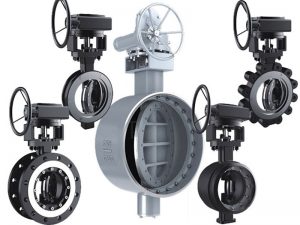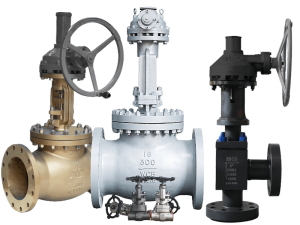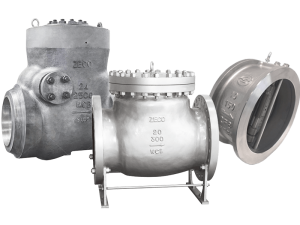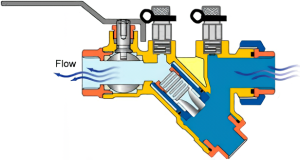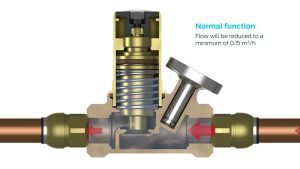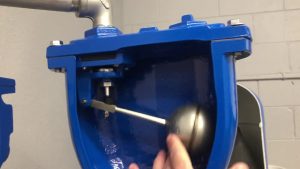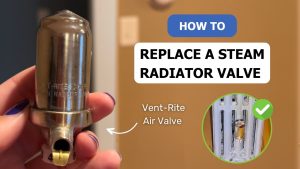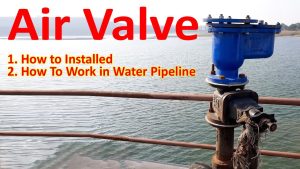Hallo zusammen! Heute beschäftige ich mich mit einer Frage, die mir immer wieder von Ingenieuren und Betriebsleitern gestellt wird: Können Drosselklappen den Durchfluss effektiv steuern?
Die kurze Antwort? Ja, Absperrklappen können durchaus zur Durchflussregelung verwendet werden.Ihre Wirksamkeit hängt jedoch von der richtigen Dimensionierung, Installation und Systemauslegung ab. Wie bei den meisten Dingen in der Technik steckt der Teufel im Detail.
Ich erkläre Ihnen alles, was Sie über die Verwendung von Absperrklappen für Durchflussregelungsanwendungen, basierend auf meiner Erfahrung mit industriellen Systemen und Gesprächen mit Ventilexperten aus verschiedenen Branchen.
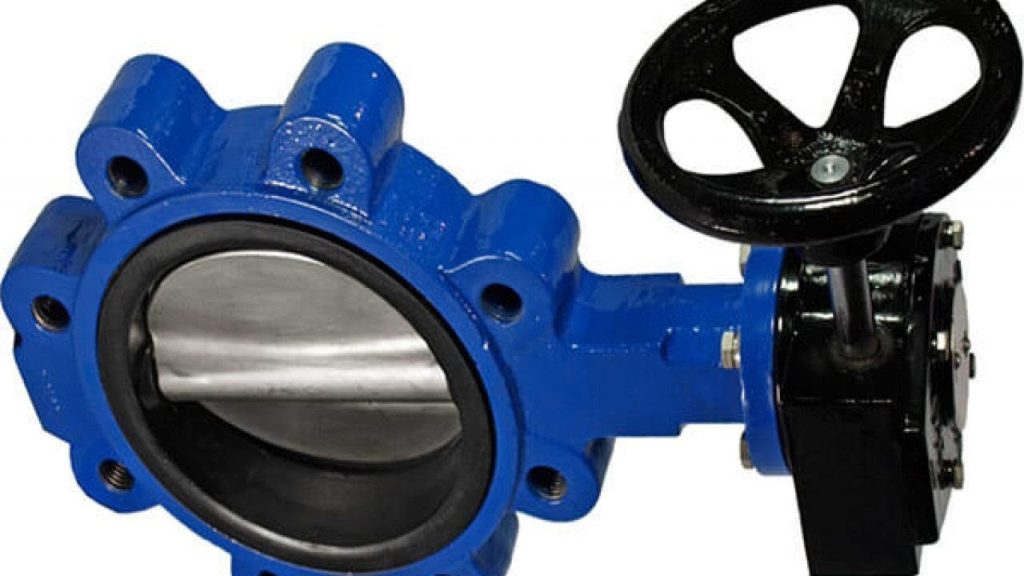
Inhaltsübersicht
- Was macht Absperrklappen für die Durchflussregelung so attraktiv?
- Die Durchflussregelungsmerkmale von Absperrklappen
- Praktische Anwendungen, bei denen Absperrklappen hervorragend abschneiden
- Wenn Absperrklappen Probleme mit der Durchflussregelung haben
- Bewährte Praktiken für den Einsatz von Absperrklappen zur Durchflussregelung
- Der intelligente Ansatz: Modifizierte Schmetterlingsventile
- Fallstudie: Erfolgreiche Absperrklappe in der industriellen Kühlung
- Wartungsüberlegungen für Steuerungsanwendungen
- Treffen Sie die richtige Entscheidung für Ihre Bewerbung
- Schlussfolgerung
Was macht Absperrklappen für die Durchflussregelung so attraktiv?
Absperrklappen bestehen aus einer rotierenden Scheibe, die auf einer Spindel in einer Rohrleitung montiert ist. Wenn sich die Scheibe parallel zur Strömung dreht, ist die Klappe vollständig geöffnet, und wenn sie um 90 Grad gedreht wird, sperrt sie das Rohr vollständig ab. Dieser einfache Mechanismus bietet mehrere Vorteile:
- Kompaktes Design die nur wenig Platz benötigen
- Kosten-Wirksamkeit im Vergleich zu Durchgangs- oder Regelventilen
- Leichteres Gewicht als die meisten Alternativen
- Schneller Betrieb von vollständig geöffnet bis vollständig geschlossen
- Geringerer Druckabfall in vollständig geöffnetem Zustand
Diese Vorteile machen Absperrklappen für viele Anwendungen interessant, aber bevor Sie sie für Ihr nächstes Projekt spezifizieren, müssen Sie ihre Regeleigenschaften verstehen.
Die Durchflussregelungsmerkmale von Absperrklappen
Wenn es um die Regelleistung geht, haben Absperrklappen eine ausgeprägte nichtlineare Durchflusskennlinie. Das bedeutet in der Praxis Folgendes:
Inhärentes Strömungsverhalten
Die Beziehung zwischen der Position der Scheibe und der Durchflussmenge ist nicht ganz einfach. Während der ersten 20-30° der Drehung aus der geschlossenen Position ist der Anstieg des Durchflusses minimal. Ab etwa 30-70° steigt der Durchfluss dann schnell an (hier ist die Regelungsempfindlichkeit am größten). Wenn Sie sich schließlich der vollständig geöffneten Stellung nähern, führt eine weitere Drehung zu einer abnehmenden Zunahme des Durchflusses.
Dadurch entsteht eine "modifizierte gleichprozentige Durchflusscharakteristik" - ganz anders als das lineare Verhalten, das Sie vielleicht für eine präzise Steuerung bevorzugen.
Einschränkung der Reichweite
Die meisten Standard-Absperrklappen bieten einen Regelbereich von etwa 10:1 bis 15:1, d. h. sie können effektiv bis zu etwa 6-10% ihres maximalen Durchflusses regeln. Das ist deutlich weniger als bei spezialisierten Regelventilen, die 50:1 oder mehr bieten können.
Praktische Anwendungen, bei denen Absperrklappen hervorragend abschneiden
Trotz ihrer Einschränkungen regeln Absperrklappen den Durchfluss in zahlreichen Anwendungen erfolgreich:
- Wasseraufbereitungsanlagen: Steuerung der Wasserverteilung in großen Mengen, wobei eine mäßige Präzision akzeptabel ist
- HVAC-Systeme: Regulierung des Kühlwasserflusses, wo Kosteneffizienz entscheidend ist
- Prozessindustrien: Verwaltung nicht kritischer Ströme, bei denen eine strenge Kontrolle nicht erforderlich ist
- Abwassersysteme: Handhabung von Rohren mit großem Durchmesser, wo Platz- und Kostenbeschränkungen bestehen
Letztes Jahr besuchte ich eine kommunale Wasseraufbereitungsanlage, in der Absperrklappen das Hauptverteilungssystem perfekt regelten. Der Betriebsleiter erzählte mir, dass sie fast 30% an Ventilkosten einsparten und dabei eine für ihre Anwendung akzeptable Regelgenauigkeit beibehielten.
Wenn Absperrklappen Probleme mit der Durchflussregelung haben
Seien wir ehrlich, wo diese Ventile nicht ideal sind:
- Präzise Dosierung von Chemikalien: Wenn eine Genauigkeit von 1-2% erforderlich ist
- Hochdrucktropfen: Wenn Kavitation oder Blitzen ein Problem ist
- Sehr niedrige Durchflussraten: Wenn Sie einen maximalen Durchfluss von weniger als 10% kontrollieren müssen
- Gülleanwendungen: Wenn abrasive Medien die Kanten der Scheibe beschädigen könnten
Für diese Szenarien sind Durchgangsventile, Nadelventile oder spezielle Regelventile oft sinnvoller.
Bewährte Praktiken für den Einsatz von Absperrklappen zur Durchflussregelung
Wenn Sie festgestellt haben, dass Drosselklappen für Ihre Anwendung geeignet sind, finden Sie hier meine getesteten Empfehlungen zur Maximierung ihrer Regelleistung:
Dimensionierung und Auswahl
Passen Sie Ihre Absperrklappe nicht einfach an die Leitungsgröße an! Dieser häufige Fehler führt zu schlechter Kontrolle. Stattdessen:
- Bemessen Sie das Ventil nach Ihren Steuerungsanforderungen, nicht nur nach dem Rohrdurchmesser
- Erwägen Sie die Auswahl eines Ventils, das eine Größe kleiner als die Leitungsgröße ist, um einen besseren Regelbereich zu erhalten.
- Bewerten Sie die Cv-Anforderungen über Ihren gesamten Betriebsbereich
- Entscheiden Sie sich für Hochleistungs-Absperrklappen mit exzentrischen Scheiben für bessere Regeleigenschaften
Überlegungen zur Installation
Die Art und Weise, wie Sie das Ventil einbauen, hat einen großen Einfluss auf seine Regelungsleistung:
- Ausreichend gerade Rohrleitungen vorsehen (5-10 Rohrdurchmesser stromaufwärts, 3-5 stromabwärts)
- Installieren Sie das Ventil in einem Abstand von mindestens 6-10 Rohrdurchmessern zu Turbulenzquellen wie Pumpen oder Krümmern.
- Sorgen Sie für ausreichenden Spielraum für die Drehung der Scheibe und die Bewegung des Stellantriebs.
- Beachten Sie die Strömungsrichtung relativ zur Scheibe, um die beste Leistung zu erzielen.
Integration von Kontrollsystemen
Sorgen Sie dafür, dass das Ventil mit Ihrem Steuersystem funktioniert:
- Verwenden Sie einen hochwertigen Positionierer, um die Reaktion zu verbessern
- Abstimmung des Regelkreises zur Berücksichtigung der nichtlinearen Eigenschaften des Ventils
- Der Öffnungsbereich des Ventils 20-80% sollte so gewählt werden, dass die Steuerung am effektivsten ist.
- Berücksichtigen Sie die Charakterisierung in Ihrem Steuerungssystem, um die Reaktion zu linearisieren.
Der intelligente Ansatz: Modifizierte Schmetterlingsventile
Wenn Sie eine bessere Kontrolle benötigen, aber dennoch die Vorteile des Schmetterlingsdesigns nutzen möchten, sollten Sie diese erweiterten Optionen in Betracht ziehen:
- Hochleistungs-Absperrklappen mit exzentrischen Scheibenausführungen
- Charakterisierte Absperrklappen mit veränderten Scheibenformen
- Dreifach gekröpfte Absperrklappen für verbesserte Abdichtung und Kontrolle
Diese spezialisierten Konstruktionen bieten Steuereigenschaften, die denen von Durchgangsventilen nahe kommen, während sie die meisten Vorteile von Absperrklappen beibehalten.
Fallstudie: Erfolgreiche Absperrklappe in der industriellen Kühlung
Ein Kunde aus der Fertigungsindustrie stand dem Einsatz von Absperrklappen für sein Prozesskühlsystem skeptisch gegenüber. Er machte sich Sorgen um die Regelgenauigkeit, musste aber sein Budget einhalten.
Wir haben 6-Zoll-Hochleistungsabsperrklappen mit digitalen Stellungsreglern eingebaut und darauf geachtet:
- Dimensionierung der Ventile speziell für ihren Durchflussregelbereich
- Installieren Sie die Geräte so, dass sie möglichst gerade verlaufen, um Turbulenzen zu vermeiden.
- Konfigurieren Sie das Kontrollsystem so, dass es die nichtlineare Reaktion berücksichtigt
Das Ergebnis? Regelgenauigkeit innerhalb von ±3% vom Sollwert über den gesamten Betriebsbereich, Energieeinsparungen durch geringeren Druckabfall und ca. 40% Kosteneinsparungen im Vergleich zu alternativen Durchgangsventilen.
Wartungsüberlegungen für Steuerungsanwendungen
Bei der Verwendung von Absperrklappen zur Steuerung wird die Wartung noch kritischer:
- Regelmäßige Inspektion: Prüfen Sie Dichtungen und Scheibenkanten auf Verschleiß, der das Regelverhalten beeinträchtigen könnte.
- Kalibrierung des Stellantriebs: Überprüfen Sie die Genauigkeit des Stellungsreglers vierteljährlich
- Spindelpackung: Überwachung auf Lecks, die den reibungslosen Betrieb beeinträchtigen könnten
- Schmierung: Wartung der beweglichen Teile gemäß den Empfehlungen des Herstellers
Diese einfachen Schritte tragen dazu bei, eine gleichbleibende Regelleistung über die gesamte Lebensdauer des Ventils zu gewährleisten.
Treffen Sie die richtige Entscheidung für Ihre Bewerbung
Können Absperrklappen also zur Durchflussregelung eingesetzt werden? Auf jeden Fall, aber der Erfolg hängt davon ab, dass man die richtigen Entscheidungen trifft.
Berücksichtigen Sie diese Faktoren bei Ihrer Entscheidung:
- Wie genau muss Ihre Kontrolle sein?
- Wie groß ist Ihr typischer Betriebsbereich in Prozent des maximalen Durchflusses?
- Welche Platz- und Gewichtsbeschränkungen haben Sie?
- Wie hoch ist Ihr Budget für die Erstinvestition und den langfristigen Betrieb?
- Wie wichtig ist die Anwendung für Ihren Gesamtprozess?
Für moderate Regelanwendungen mit größeren Rohrdurchmessern bieten Absperrklappen oft das beste Gleichgewicht zwischen Leistung, Platzbedarf und Wert.
Schlussfolgerung
Drosselklappen können bei richtiger Anwendung, Dimensionierung und Installation sehr effektiv für die Durchflussregelung sein. Auch wenn sie in anspruchsvollen Anwendungen nicht an die Präzision spezialisierter Regelventile heranreichen, sind sie aufgrund ihrer Kosteneffizienz und kompakten Bauweise ideal für viele moderate Regelszenarien.
Der Schlüssel liegt darin, ihre inhärenten Eigenschaften zu verstehen und ihre Stärken zu nutzen. Wenn Sie die oben beschriebenen Best Practices befolgen, können Sie Absperrklappen für die Durchflussregelung in zahlreichen Anwendungen erfolgreich einsetzen.
Denken Sie daran, dass die Auswahl eines Ventils immer einen Kompromiss zwischen Kosten, Leistung und Wartungsanforderungen darstellt. Für viele Anwendungen ist eine richtig eingesetzte Absperrklappe der ideale Kompromiss in diesem Bereich.
Können Drosselklappen also zur Durchflussregelung eingesetzt werden? Ja - aber wie bei jeder technischen Entscheidung liegt der Erfolg darin, die Anforderungen der Anwendung zu verstehen und das richtige Werkzeug für die Aufgabe auszuwählen.

